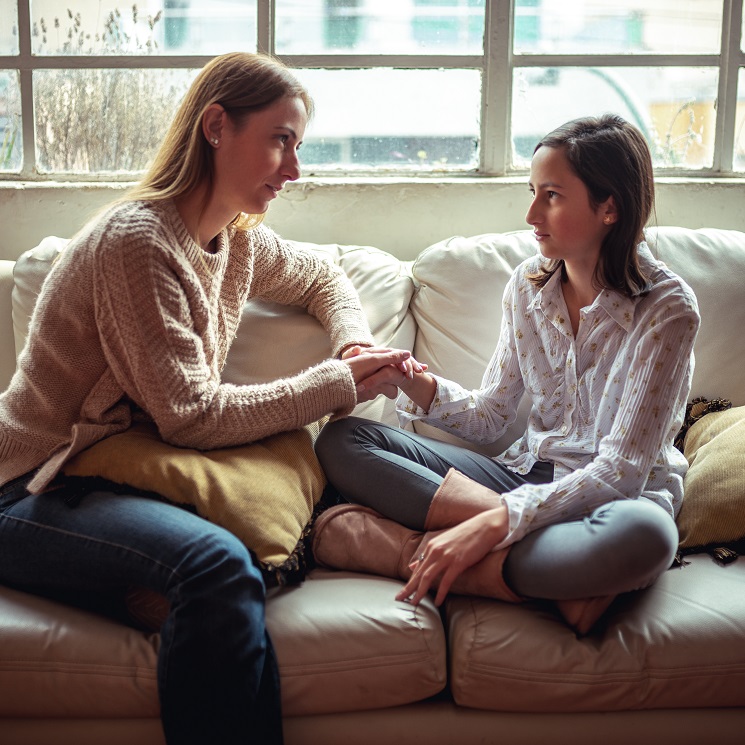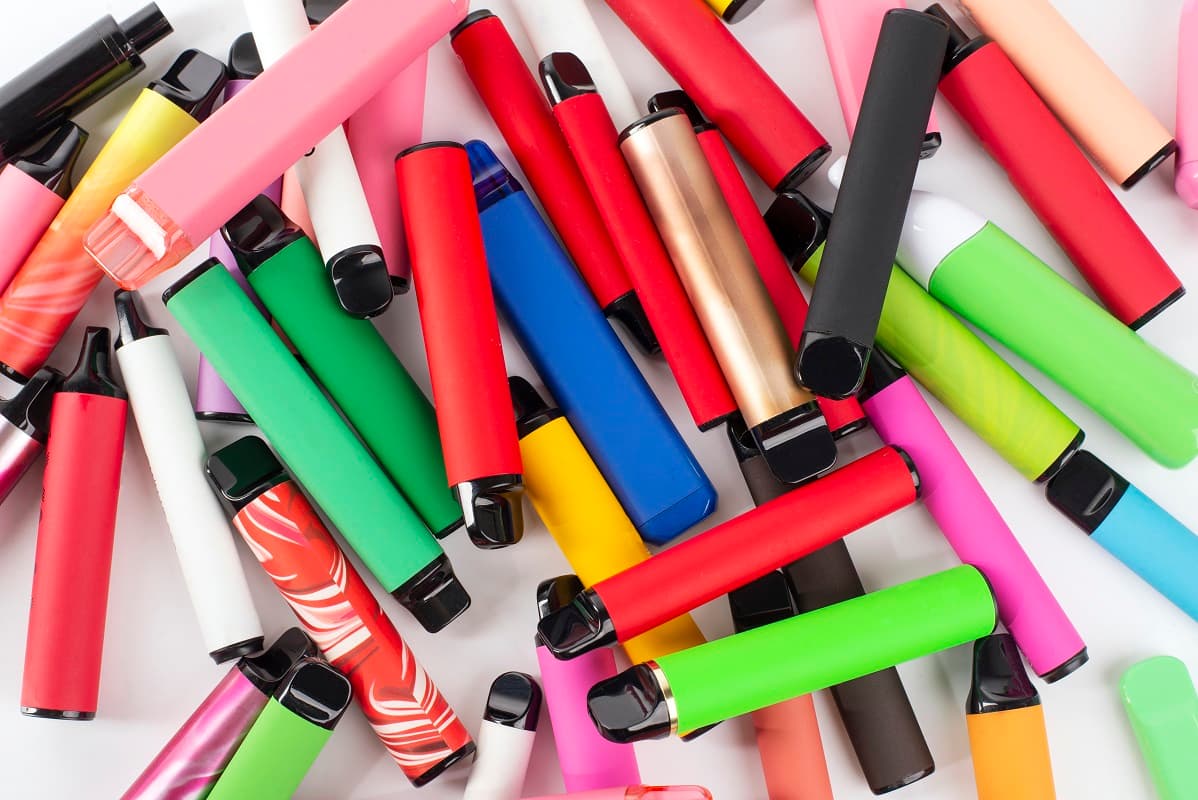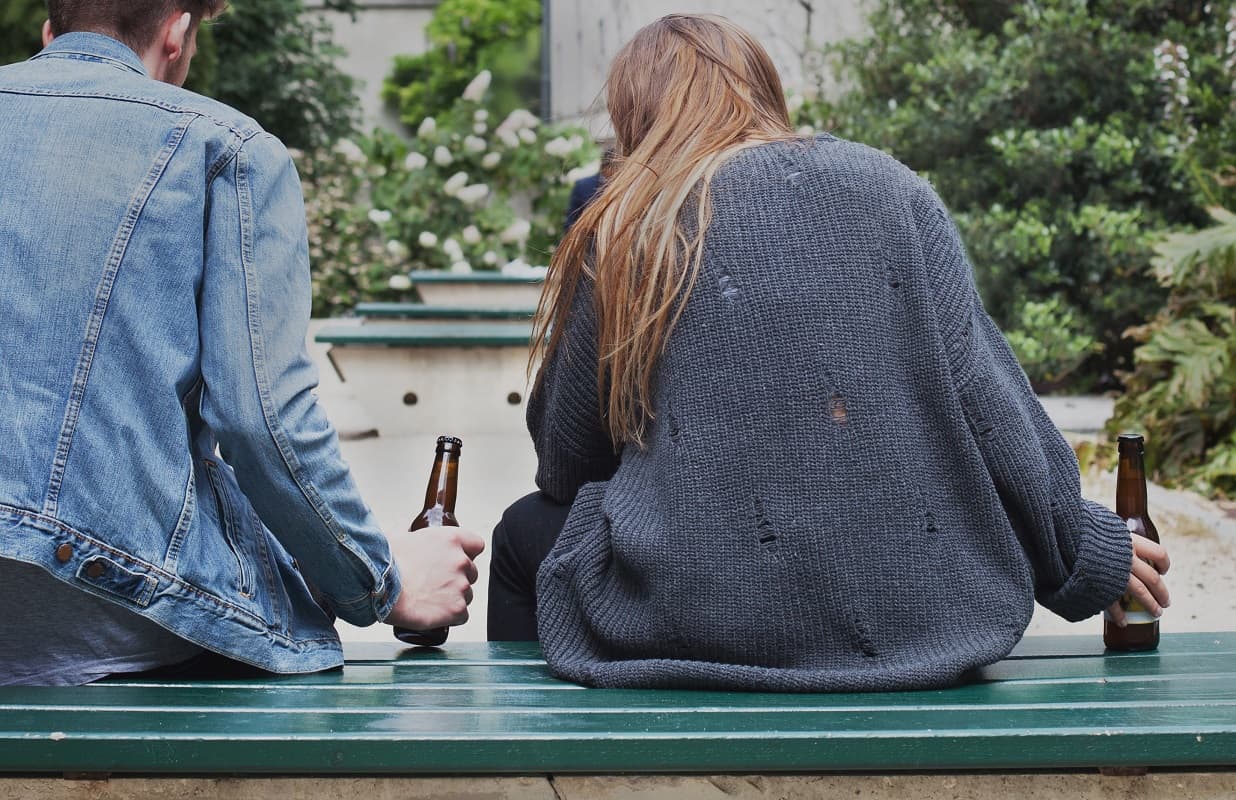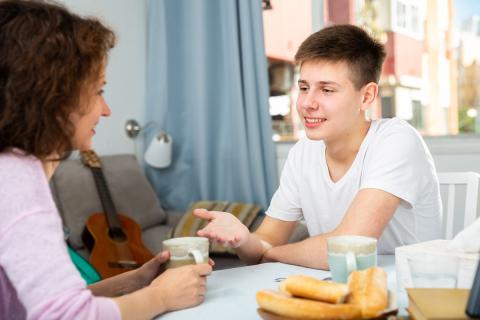In Scotland, it’s illegal to sell vapes or e-cigarettes to anyone under 18, or to buy them for someone who’s under 18. But this doesn’t stop young people from getting hold of them. Here you can find out more about the risks of vaping, how you can talk to your child about it and what to do to support them if they’ve taken it up.
In this short video, Mark Hunter, project officer at Fast Forward, shares advice to help you talk to your child about vaping.
What is vaping?
Electronic cigarettes (e-cigarettes or vapes) are battery-powered devices which heat a liquid that becomes a vapour you inhale. This liquid often contains nicotine and flavourings.
They were originally intended to help people stop smoking, and are only meant to be used for a short time. But they’re now being used by young people who have never actually smoked.
Is vaping bad for you?
Vaping is much less harmful than smoking. However, although we don’t yet fully understand the long-term effects vaping has on our health, evidence shows that e-cigarettes or vapes are not harm-free.
- Vapes contain nicotine, and may quickly become harmfully addictive for young people.
- Young people can quickly become addicted to nicotine, and this can affect their concentration and impact their ability to learn and study. Nicotine withdrawal can also disrupt sleep and may cause headaches. It can also affect their mental health and mood.
- While the long-term effects of vaping are still being researched, it’s thought they can have a negative impact on the health of the heart and lungs. Cancer Research UK, the British Heart Foundation, the Royal College of Paediatrics and Child Health and the Royal College of Physicians all state that vapes should only be used by adults who smoke as an aid to giving up smoking.
You can find out more about the harmful effects of vaping on the NHS Inform website.
It’s also worth noting that, although vapes can seem cheap compared to cigarettes, using them regularly can quickly add up to a lot of money.
In this short video, Professor Linda Bauld discusses the impact of vaping on young people.
Why do young people try vaping?
As our page on risk-taking behaviour explains, young people’s brains are still developing. This means they can’t always think through the consequences of the things they do. As a result, they’re more likely to try things like vaping out of curiosity or ‘for fun’, without considering the harm they could be doing to themselves.
- Vapes are colourful and come in lots of different flavours, which can seem appealing to young people. They don’t seem scary or harmful, as cigarettes do.
- Many young people really want to fit in with their friends and are scared of being rejected by them. This means they can sometimes be persuaded to do things they don’t particularly want to do or know they shouldn’t do, so as not to feel left out.
- In some cases, young people try vaping to help them feel less anxious or stressed.
Signs your child may be vaping
It’s usually fairly easy to tell if your child's been smoking, as the smell is a real giveaway. But it can be harder to tell if they’re vaping. Here are some signs you can look out for:
- Many vapes have sweet flavours like vanilla or bubble gum, so be aware of smells like that.
- If your child seems more moody, jittery or irritable than usual, it could be a sign of nicotine addiction. This may also disrupt their sleep and cause headaches.
- Vaping can dry out your mouth, so if your child seems thirsty all the time, this could be another sign.
- Vaping can also make you cough more than usual.
In addition, make sure you know what vaping devices look like. Some can look like pens or flash drives for computers that be easily hidden in plain view.
Tips for starting a conversation about vaping
Tip #1: It's good to talk
The more openly you can discuss vaping, the more likely your child will be able to come to you if, for example, their friends are pressuring them to try it or they’ve started vaping and want to give up. Our page on talking and listening to your teen has more advice for starting tricky conversations.
Tip #2: Look for 'teachable moments'
If a story about vaping comes up in the news or a programme you watch, or you walk past a vape shop, you could ask them what they think. Then make sure to listen to what they have to say and talk about it calmly and openly. Giving your child a lecture is unlikely to get you anywhere!
Tip #3: Know your facts
It’s a good idea to read up about vaping so you can talk to your child about the risks in a balanced, informed way. There’s no need to bombard them with info, just make sure you know what you’re talking about. You could start by taking a look at NHS Inform’s page on vaping at www.nhsinform.scot/vaping.
What to do if you think your child may be vaping
Tip #1: Stay calm
If you suspect or find out that your child has been vaping, you may well feel upset or angry. But try to stay calm when you talk to them about it, as shouting and accusing them never gets us anywhere. If you need to let off steam, try talking to a friend or family member instead.
Tip #2: Don't panic
Many of the signs of vaping are also text book signs that your child is growing up and their hormones are running rampant! So don’t put two and two together and make five. And even if you’re sure, accusing or blaming them won’t help.
Tip #3: Pick your moment
Pick a good moment to talk to your child, when you’ve time for a proper discussion. For example, if you’ve just found vapes in their room, wait until you’ve calmed down before talking to them.
Tip #4: Plan what you're going to say
It may help you keep calm if you work out what to say in advance. Knowing the facts and sticking to your script could stop the conversation turning into an argument.
Tip #5: Try to stay positive
Try not to blame your child or to talk about worst case scenarios. Instead, focus on how you can support them.
Tip #6: Focus on their behaviour
It may help to talk about how your child is behaving rather than focusing on vaping. If they’ve been irritable or tired you could start by saying you’ve noticed this and then ask if there’s anything they’d like to talk about.
Tip #7: Listen to what they have to say

Encourage your child to talk about why they feel the urge to vape. Understanding this could help you support them. For example, if they say it helps them feel less stressed, you could help them find other ways to calm down. If they feel pressured into it, you could help them find ways to say no.
Tip #8: Put yourself in their shoes
Growing up is hard, and what with school, raging hormones and trying to fit in with their friends, young people are under a lot of different pressures. Try to remember what it was like when you were a kid, and show that you’re on their side and want to help them, not have a go at them.
Getting help and support
If you’re concerned about your child vaping, you don’t have to cope with the situation on your own.
- Childline offers advice and help for young people to give up vaping.
- Quit Your Way Scotland offers support to anyone looking to give up vaping or smoking, no matter how old they are. You or your child can chat to an adviser on the helpline or online.
If you discover that a business has been selling vapes to under 18s, you can report them to Trading Standards. You can find out more about how to do this on the Citizens Advice Scotland website.
 Activities & Play
Activities & Play Behaviour
Behaviour Childcare
Childcare Development & Growing Up
Development & Growing Up Family, Friends & Relationships
Family, Friends & Relationships Feeding Your Baby
Feeding Your Baby Food & Eating
Food & Eating Health & Safety
Health & Safety Mental Health & Wellbeing
Mental Health & Wellbeing Money & Work
Money & Work Online Behaviour & Safety
Online Behaviour & Safety Pregnancy & First Days
Pregnancy & First Days School & Education
School & Education Sleep
Sleep










 Family, Friends & Relationships
Family, Friends & Relationships
 Mental Health & Wellbeing
Mental Health & Wellbeing